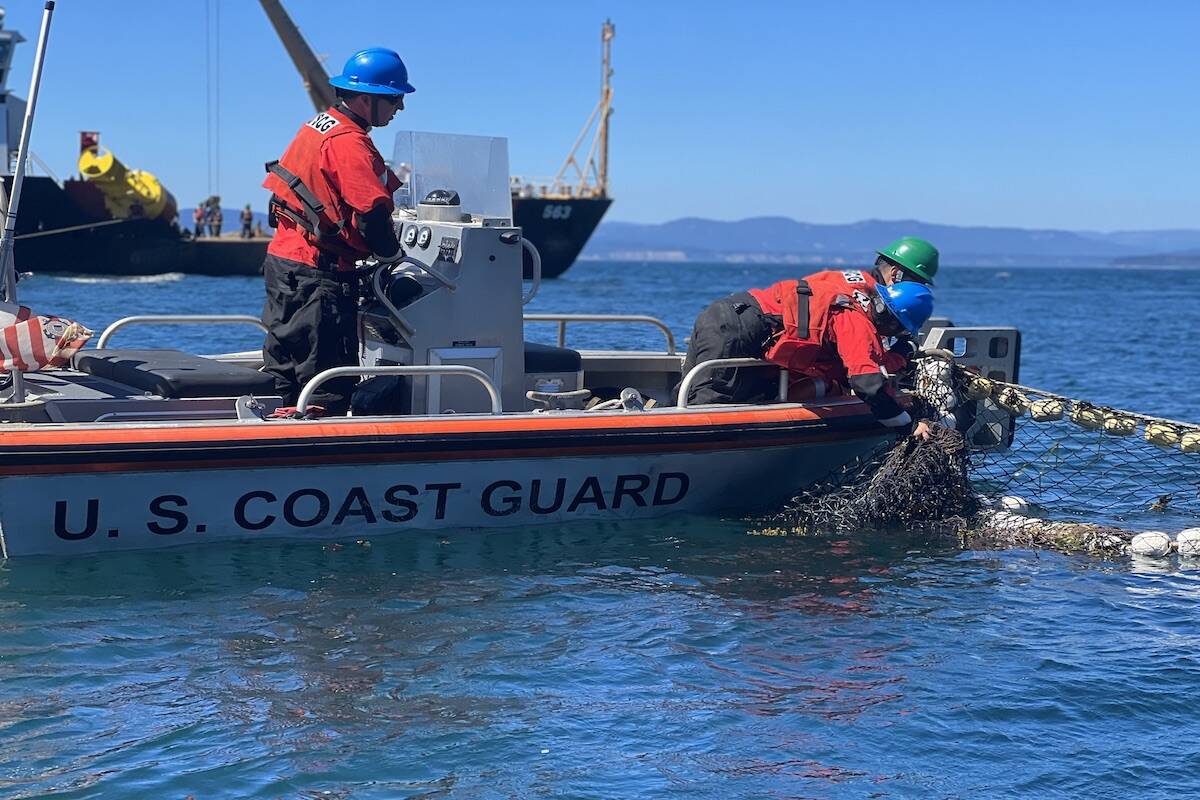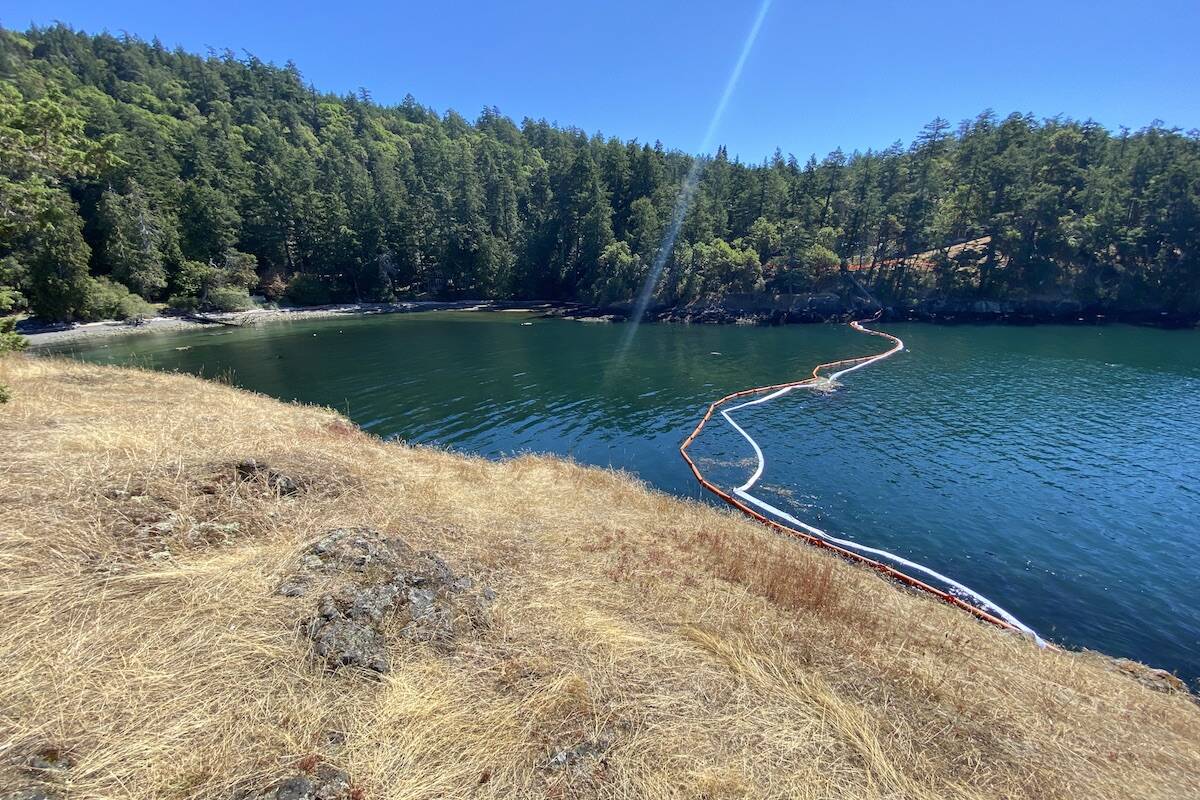As Monika Wieland Shields looked out from the west edge of San Juan Island on Tuesday, the diesel sheen from a fishing boat that sunk Saturday was less pronounced.
And by Wednesday, almost 4,000 feet of booms had been dropped into nearby ecologically sensitive areas to absorb the leaked fuels on the Washington state-Greater Victoria marine border. Knowing that endangered orcas had come eerily close to the site while other ecological impacts remain unknown, Shields said a better response was needed to protect wildlife.
“Having trained responders and equipment ready to deter marine mammals from an active spill zone seems like something that needs to be deployed within hours rather than days,” Shields, the U.S.-based Orca Behavior Institute’s director, said in an interview.
The institute tracked the entire southern resident killer whale population heading into Haro Strait on the afternoon of the spill, but luckily they turned around just a few miles short of the affected area.
“Having almost the entire population exposed to diesel is not conducive to them recovering,” Shields said of the close call. Noting it’s not unusual for all 74 known southern residents to travel together in summer, a catastrophic spill could wipe out the remaining population, she added.
“So many people care about these whales and are doing so much to help the population recover, but one accident could reverse all of that hard work and could result in the extinction of this population.
“And that’s just not acceptable.”
The orcas have since kept their distance, but Shields frets about other animals – like the Biggs killer, minke and humpback whales, harbour seals, steller sea lions and otters – coming into contact with the fuels.
“We don’t really know the impacts on marine life yet, but it’s certainly a concern.”
There’s also worry surrounding whether marine birds such as marbled murrelets and tufted puffins – which are threatened and endangered, respectively – were exposed. Aerial photos taken Monday (Aug. 15) placed the murrelets on San Juan Island and showed the sheen heading toward Smith Island – one of the puffins’ local breeding spots.
Most of a seine fishing net that floated free from the wreck was pulled from the water on Tuesday, while divers removed some parts of a second net located 30 metres under the surface.
A statement from Jon Ladyga, the response’s on-scene coordinator, said they’re proud of all the involved agencies for minimizing the pollution’s environmental impacts.
“While optimistic about the on-water and shoreline assessments, we recognize that critical work remains,” he wrote.
For Shields, the incident has brought a hard realization to the forefront – given the number of boats, freighters and tankers traversing the area, it likely isn’t a matter of if, but when a larger accident will happen. She hopes the relatively small spill puts a focus on better preparation and speedier responses that ensure marine life is protected.
“This is very concerning and very much a wake-up call.”
READ: Fuel-leaking fishing boat falls deeper, complicating response near Victoria
jake.romphf@blackpress.ca. Follow us on Instagram.
Like us on Facebook and follow us on Twitter.
Greater VictoriaSalish SeaSouthern Resident Killer WhalesState of Washingtonvancouverisland


